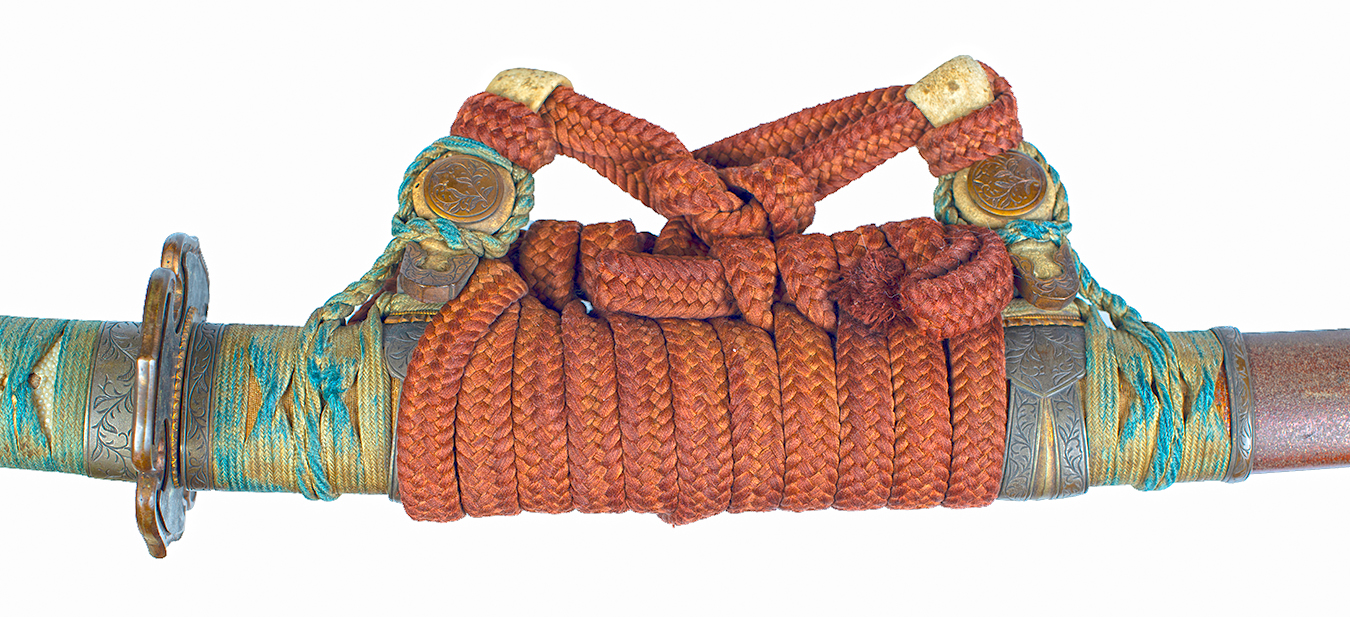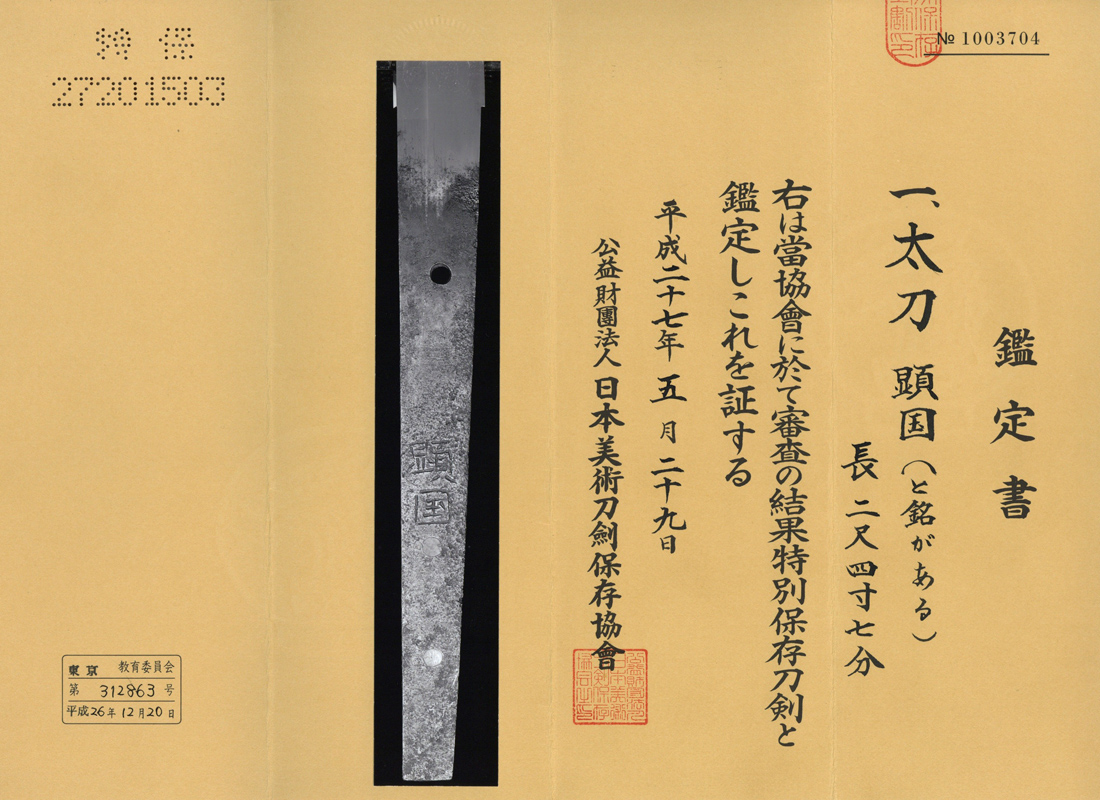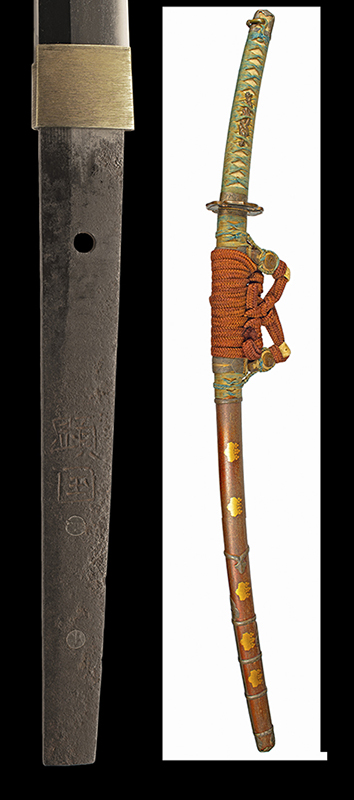|
| |||||||||||||||||||||||||||||||||||||||||||||||
Hamon : Nie-deki gunome. The nioi-guchi is bright and the gunome are orderly. There are areas of sanjuba in the monouchi on both sides. Sunagashi, kinsuji and inazuma can be seen. There are ashi and tobiyaki is also present.
Boshi : Midare-komi and hakikake with a short return.
Kitae : Itame hada mixed with mokume. There are some areas of sumigane. Ji-nie and chikei are present. Misty nie-utsuri is present.
About this sword : This is a koto period tachi by Nagato Sa Akikuni. There were two generations of this line. The first generation was active in the Oei period 1394-1428. He was a student of Sa Yasuyoshi. The nidai was known for making tanto and wakizashi and worked in the Eikyo period 1429-1441. This blade is singed tachi mei and has the tachi sugata that was popular in the Oei period. Specifically, please note this sword's long nagasa, deep sori and tapering mihaba-the classic Oei shape. Being that this blade is a true tachi we can judge this to be a work of the shodai.
This blade has an NBTHK Tokubetsu hozon paper. This speaks highly of the empirical value of the sword and shows without question that the NBTHK believers the work is by Akikuni. However, it should be pointed out that the paper states "to mei ga aru" in parenthesis. This translates as "mei recorded as". The meaning of this is that the mei is not typical for the maker. It is important to note that if a blade is gimei, it cannot receive a paper and if the NBTHK is not certain of its judgment, they use the result of "Horyu" (reserved).
This blade is in nice polish and there are no kizu. This blade has been polished many times of the last 600 years. Therefore, we can see sumigane on the surface and the boshi runs off the kissaki partially.
This sword is accompanied by an Itomaki-no-Tachi Koshirae. This looks to be a work of around the Meiji period. The mounts are in good condtion and the urushi is fully intact. The menuki are iron and of dragons. There is a nice shirasaya for the blade and a tsunagi for the mounts.
SOLD













